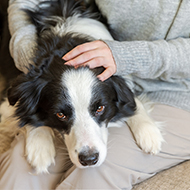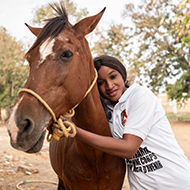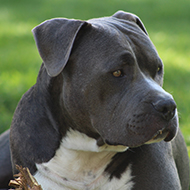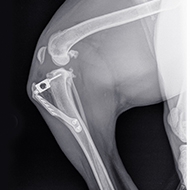Dachschunds are 10-12 times more likely to suffer from IVDD than any other breed.
No link found between chromosome 12 and "herniated" cases vs control
Initial results released from the Animal Health Trusts' Dachshund Intervertebral Disease (IVDD) genetics project have revealed that no correlation has been found between the Chromosome 12 region, previously identified by Danish researchers, and the Dachshund Breed Council's "herniated" cases vs controls.
Herniation of the intervertebral disc (a "slipped disc") is a significant problem in dogs and a common cause of pain and difficulty walking. Although dogs of any breed can be affected, Dachshunds are 10-12 times more likely to suffer than other breeds, indicating that the disorder probably has a genetic component and mutations in specific gene(s) play a role in the development of the condition.
Working in collaboration with the Dachshund Breed Council, the AHT launched a project last July to investigate the genetics of IVDD in Dachschunds, with the aim of developing a genetics tool that breeders can use to reduce the prevalence of the disease.
The project was set up to build on the work carried out in 2011 by the University of Copenhagen, which used dogs with calcifications (cases) and dogs without calcifications (controls). The findings from this study gave convincing evidence that genes on chromosome 12 affect the development of intervertebral disc calcification in the Dachshund.
The AHT's project was significantly different to the Copenhagen study, in that it used dogs that have suffered herniations in the lumbar region, and dogs that have never suffered back problems.
Although they are disappointed with the results, the Dachshund Breed Council said that they always knew there were risks because they were testing a slightly different hypothesis to the Danes.
Cathryn Mellersh, head of molecular genetics at the AHT, said "Moving forward we think the most appropriate next step is to undertake a genome-wide scan that will involve typing a set of cases and controls for around 200,000 markers spanning the dogs’ DNA to try to identify a region of the canine DNA associated with IVDD.
"For this genome scan we need to ensure that we have a robust set of cases, so we will work with a neurologist to review cases to create a tight case definition, as we have previously done for complex conditions in the dog, such as epilepsy."
Agreeing that further work would be worthwhile, the Dachshund Breed Council added: "This issue is far too important for the breed's health for us not to explore it further using the technology available."







 Birmingham Dogs Home has issued an urgent winter appeal as it faces more challenges over the Christmas period.
Birmingham Dogs Home has issued an urgent winter appeal as it faces more challenges over the Christmas period.
